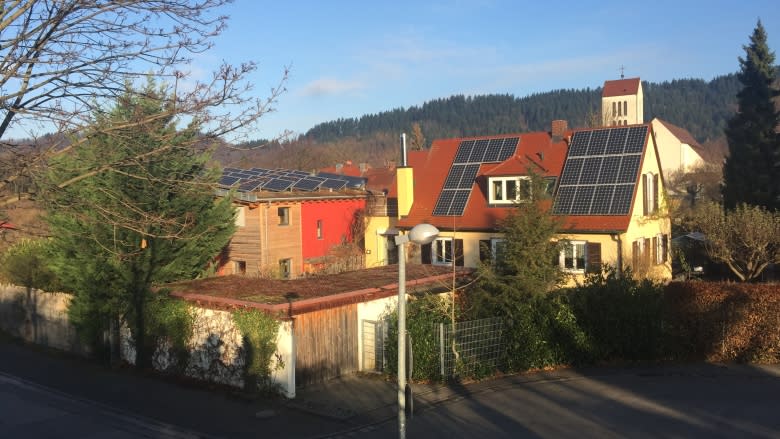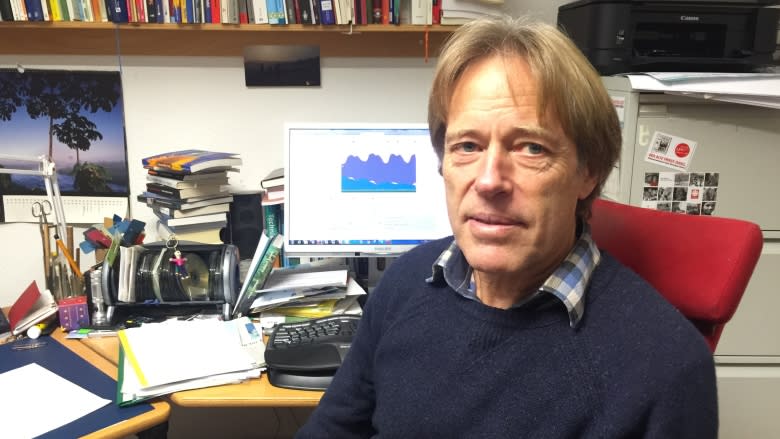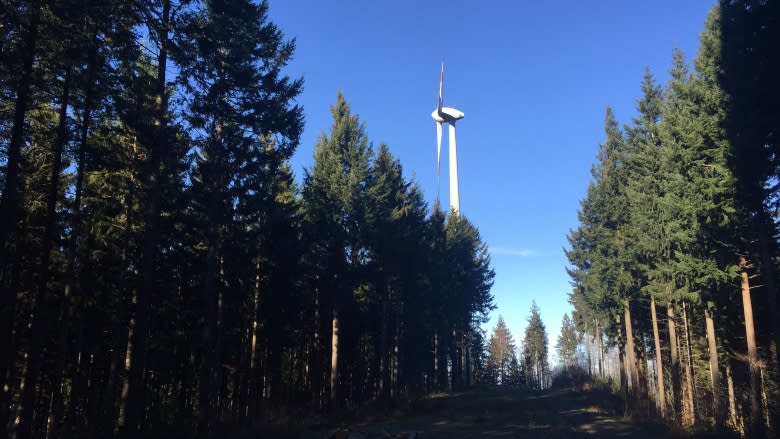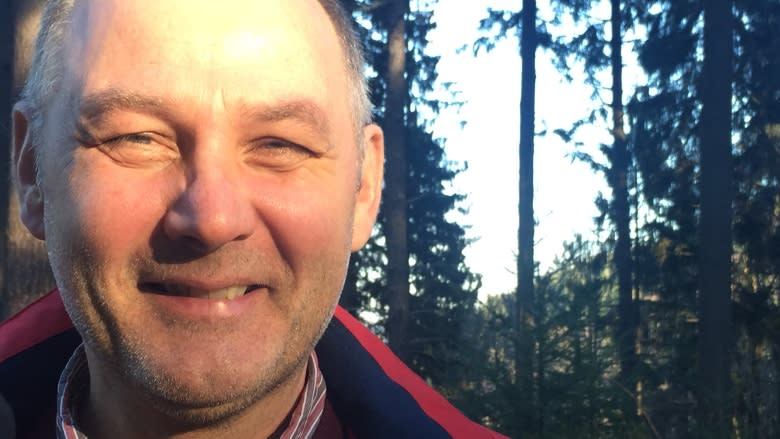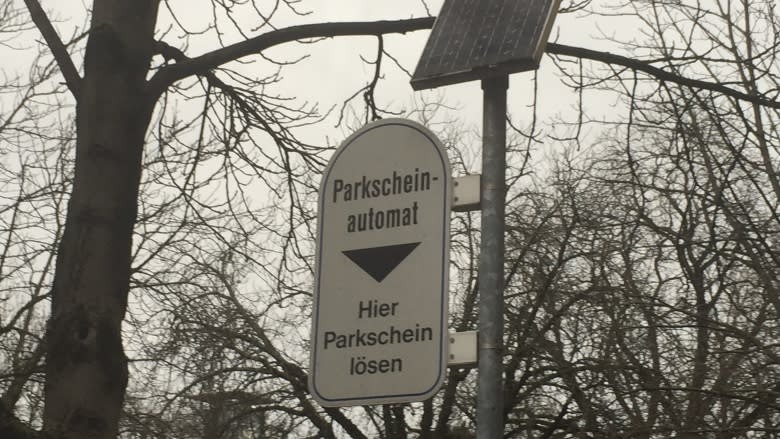Freiburg leading Germany's green energy revolution
This story is part of CBC News special coverage of climate change issues in connection with the United Nations climate change conference (COP21) being held in Paris from Nov. 30 to Dec. 11.
One of the first things you start to notice when crossing the border from France into south-west Germany is the dark glint of solar panels on the roof-tops, like clusters of bathroom tiles.
Freiburg, on the southern tip of the Black Forest, and the other towns and villages nearby, have become Germany's solar heartland, situated as they are in the sunniest part of a country not known for its blue skies.
Less known is the role that the anti-nuclear movement played in the development of Freiburg as a cutting edge city for renewable energy.
Dieter Seifried is an engineer (and author) who came to the region in 1973 to work on a nuclear power plant being planned near the village of Wyhl.
But not long after he changed his mind. And today you can't convince him that nuclear power is a safe or clean alternative to fossil fuels.
While neighbouring France gets about 75 per cent of its electricity from nuclear power, "you will see first that it is not clean at all, second that it is expensive and third that we have a lot of unsolved problems like where do we deposit the waste," says Seifried. "There's still not a solution."
In 1981, Seifried co-founded an institute that began to research alternative forms of energy, determined to prove the critics wrong when they said the lights would go out without the Wyhl nuclear plant.
It published a study called Energiewende, which has become a by-word for Germany's energy policies and translates as "energy transformation."
But speaking in a small office in one of Freiburg's leafy neighbourhoods, Seifried says it was more of a revolution than a transformation when it came to how people started to change their thinking.
No more nukes
The protests at Wyhl back in the 1970s — led initially by students and farmers — were successful in preventing the nuclear power plant from being built.
And without that anti-nuke movement there might not have been the incentive to explore alternative energy sources.
Now, more than three decades later, nearly 30 per cent of Germany's electricity comes from renewable resources.
And in the wake of the Fukushima meltdown in Japan in 2011, Germany committed to phasing out all 17 of its nuclear reactors by 2022 — even as it seeks to reduce its reliance on coal because of its high CO2 emissions.
Germany's anti-nuke movement did something else, too: It forged a powerful community spirit that brought people together to try to change their energy future.
That became just as important, say local activists, in the renewable revolution that followed.
"Most of the things that happened in Freiburg were not a decision by the local government," says Seifried. "It was the initiative of the people who work in this field, and then government had to accept it or was forced to accept it or was convinced to accept it."
Self-reliance
Josef Pesch is something of a modern-day renaissance man who today runs a firm that develops community-owned renewable energy projects
"We are giving power to the people in a very real sense," he says, "by allowing them to produce their own. This comes in Germany very much from a farming tradition, of being self-reliant."
When he picks me up in his van from my solar-powered hotel in the centre of town, he has a ready smile and Glenn Gould's Goldberg Variations on the CD player.
Pesch has spent plenty of time in North America where he taught literature and worked as a translator, and he likes to note the similarities between this part of Germany and British Columbia.
First stop is the football stadium. "The first community project here was on the stadium roof of SD Freiburg, the first soccer stadium in Germany that had PV [photovoltaic material] on it," he says.
"Freiburg had just moved into the Premier League at the time so it helped."
But what really changed things in Germany was the introduction, in 2000, of a clean energy bill that forced utilities firms to pay a set fee called a feed-in tariff to anybody providing power to the grid.
A model for others, including Ontario a decade later, the act made it economically feasible for small energy producers to offset the higher costs of going green.
At the same time, advances in technology made the wafer-thin solar panels fitted with photovoltaics affordable.
Market distorting?
Critics call the feed-in tariffs market-distorting subsidies that have driven down the value of electricity while still pushing up energy costs and causing headaches for the country's big utilities companies.
But Pesch says it was visionary. "We fulfilled Maggie Thatcher's dream that every person should become as an entrepreneur," he jokes.
"Anyone, any householder, any farmer can do solar and wind or even bio without a big problem. But that farmer could not run a big coal-fired power station."
The result was a structural shift that fragments the energy market down to very local levels and makes it difficult for the traditional big utilities — the dinosaurs as Pesch calls them.
But the dinosaurs are now fighting back, lobbying the government in Berlin to make investment in renewables less profitable.
A number of municipalities in northern Germany in particular have invested in the old energy companies, adding to the pressure on the central government.
"It's a win for society, yes," says Seifried of the shift to renewables, "but not a big win for all."
He points to the share losses on the business pages for Germany's large energy companies and predicts hard times ahead for the energiewende.
Storage the key
Still, there is no indication that Germany's renewable industry is in retreat.
The Fraunhofer Institute for Solar Energy Systems in Freiburg employs some 1,200 people and is one of the world's foremost solar research facilities. Some say the future lives here.
"We are not focussed at Fraunhofer on photovoltaics alone, but also on energy efficient technologies and a general sense of building integration on mobility, on heat," says deputy director Dr, Andreas Bett.
Research into storage, which could offset the instability of renewable systems, is one of the areas of interest these days.
"Because we can only produce if sun is available, if wind is available, so what is the in-between?" asks Bett. "That could be batteries. Could be heat storage. Could be a transformation from electricity into hydrogen."
What Bett, Seifried and Pesch are all counting on is the good will of the German people, and what they believe is a genuine desire on their part to do something about climate change.
Opinion polls here in Germany suggest people are still willing to pay more for clean and renewable energies than dirty.
And of course once you start producing your own electricity, either by wind or solar or whatever, "you become a lot more aware of what is happening," says Pesch.
"Because then you realize what effort it takes to produce this very valuable commodity. And of course then the logical consequences is that people become energy savers."

